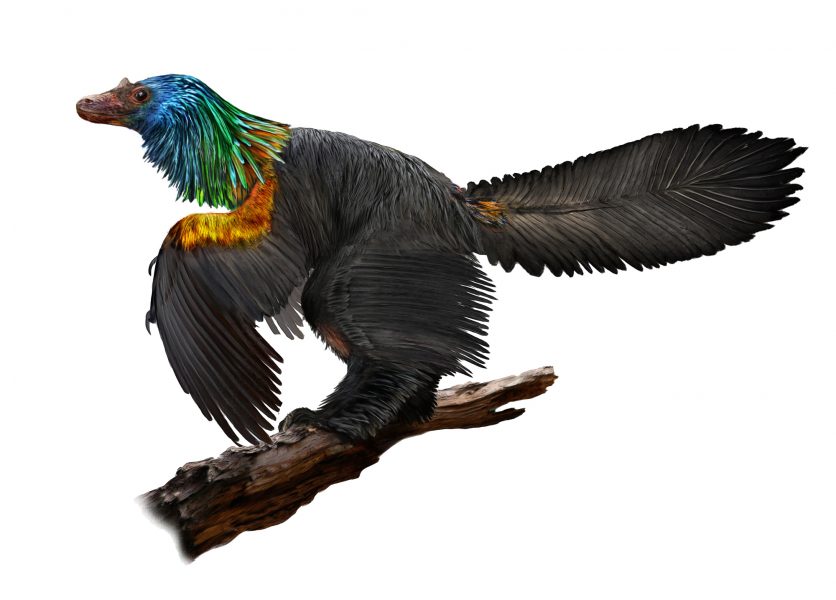Meet the Rainbow Dino
December 3, 2018

Ancient dinosaurs were adorned in some amazing ways, from the horns of the triceratops to the plates and spikes of the stegosaurus. A newly described, bird-like dinosaur fossil from China contains evidence that could add a new accessory to the list: a shaggy ruff of rainbow feathers.
A team of researchers, including scientists from The University of Texas at Austin, are the first to conduct an in-depth study of the dinosaur. They dubbed it Caihong juji — a name that means “rainbow with the big crest” in Mandarin.
Julia Clarke, a professor in the Department of Geological Sciences who helped describe the new species, said that it’s possible that the dino used its flashy neck feathers and a bony crest on its snout to attract mates.
“Iridescent coloration is well known to be linked to sexual selection and signaling, and we report its earliest evidence in dinosaurs,” said Clarke.
A description of the exquisitely preserved, chicken-sized dinosaur was published on Jan. 15, 2018, in the journal Nature Communications. Dongyu Hu, a professor in the College of Paleontology at the Shenyang Normal University led the study.
The dinosaur has features that are both ancient and modern. The bony crest is usually seen in dinosaurs from earlier eras, while the neck feathers show evidence of pigment-containing cells called melanosomes. The scientists found that the preserved melanosomes most closely resembled those in the iridescent, rainbow feathers of hummingbirds.
Caihong is also the earliest known dinosaur with asymmetrical feathers, the feather type found on the wingtips of modern birds that helps control flight. But unlike birds today, Caihong’s asymmetrical feathers were on its tail, not its wings — a finding that suggests that early birds may have had a different steering or flight style.
A farmer from China’s Hebei Province found the fossil in 2014. Its nearly complete skeleton is preserved in a slab of rock and surrounded by impressions made by feathers which include imprints made by the microscopic melanosomes. Chad Eliason, a postdoctoral associate at the Field Museum of Natural History, helped analyze the microstructural fossil evidence for color while he was a postdoctoral researcher at the Jackson School of Geosciences.
Back to the Newsletter